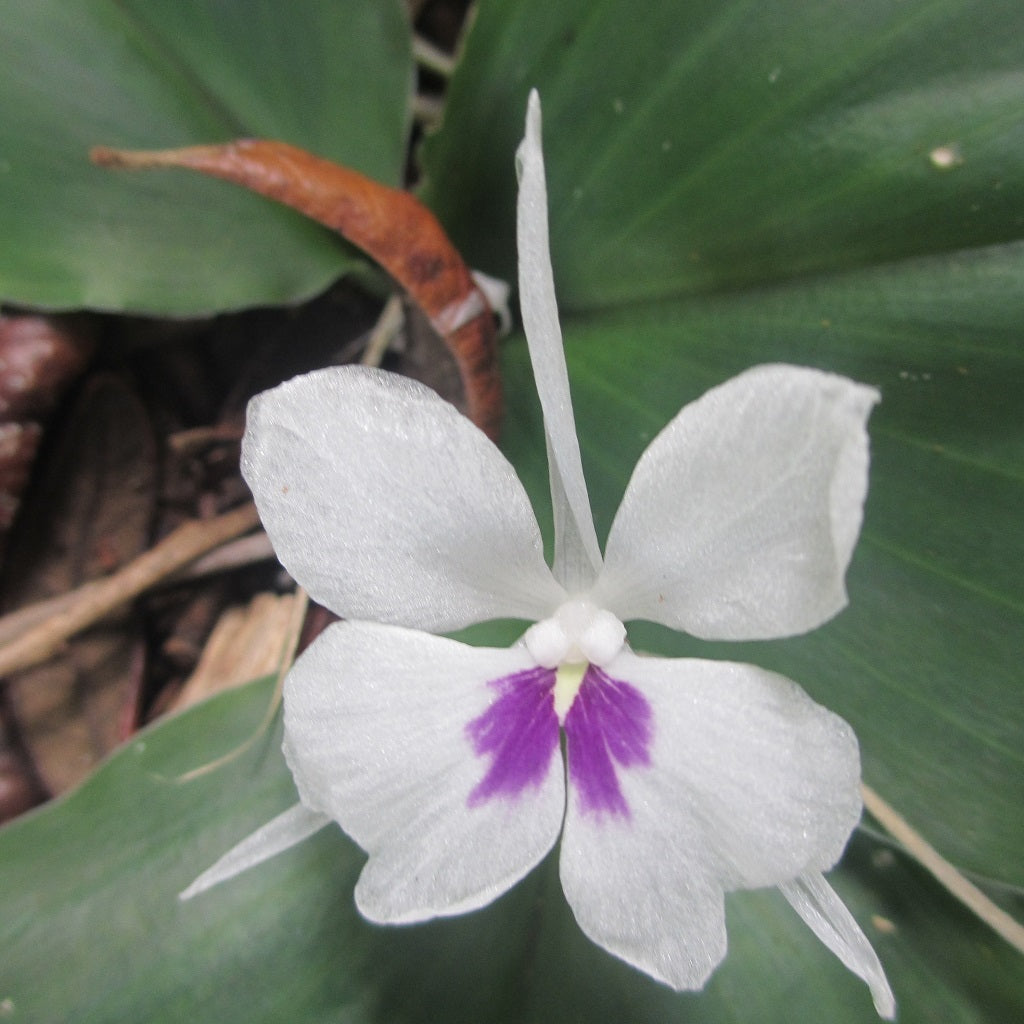Kaempferia Galanga
Family
Zingiberaceae
Origin
Africa & Asia
Description
Kaempferia Galanga is also often called the galangal. Sand Ginger is a small, stemless perennial herb growing up to 45cm tall from a rhizomatous rootstock.This short-stemmed herb has flat, green, round leaves that measure 3-6 inches across. The white flowers (with a purple spot on the lip) are ephemeral, grow from the center of the plant, and grow to about 1 inch breadth.
New leaves start growing in mid spring from the small dormant rhizomes. In summer, one or two flowers are produced successively from the centre of the growing tip. Flowering lasts over a two month period. The plants becomes dormant in winter - leaves die down in late autumn and rhizomes remain underground through winter. .
In India, the root is often chewed with betel nut (Areca catechu). A tea made of the leaves is employed for sore throat, swellings, rheumatism, and eye infections in India. The root of K. galanga is considered warm, fragrant, and pungent, and very beneficial for the lungs. It is used for cold in the chest and abdomen, vomiting, diarrhoea, intestinal parasites, and toothache.
Environment
Rich, well drained soil. Best grown in a container in a warm, sheltered and semi-shady spot. Water and feed well during the growing season
Landscape Use
The plant is grown as an ornamental herb




















